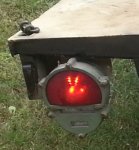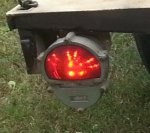TexAndy
Active member
- 1,427
- 16
- 38
- Location
- Bee County, Texas
Some guy out of hong kong is selling 100 super bright (20,000mcd) LEDs with 100 1/4watt-rated resistors for 5.75, shipped on ebay. I couldn't resist. Resist. Get it? 
Anyways, I'm going to see if I can scrounge up some perfboard or something and wire up a drop in LED module for a standard tail light. See how it works.
This ain't exactly reinventing the wheel, so it should work. It won't be as smart as the real ones. Pretty much be stuck in the 12V to 14V, I think. But if this works, I'll be redoing the lights on my M1102, which I only plan on towing behind my chebby, anyways.
It's cheap enough that I suppose you could wire up a 24V module and swap them when you want to tow it behind a mil vehicle, tho.
Anyone else around here tried this mod?
Anyways, I'm going to see if I can scrounge up some perfboard or something and wire up a drop in LED module for a standard tail light. See how it works.
This ain't exactly reinventing the wheel, so it should work. It won't be as smart as the real ones. Pretty much be stuck in the 12V to 14V, I think. But if this works, I'll be redoing the lights on my M1102, which I only plan on towing behind my chebby, anyways.
It's cheap enough that I suppose you could wire up a 24V module and swap them when you want to tow it behind a mil vehicle, tho.
Anyone else around here tried this mod?




